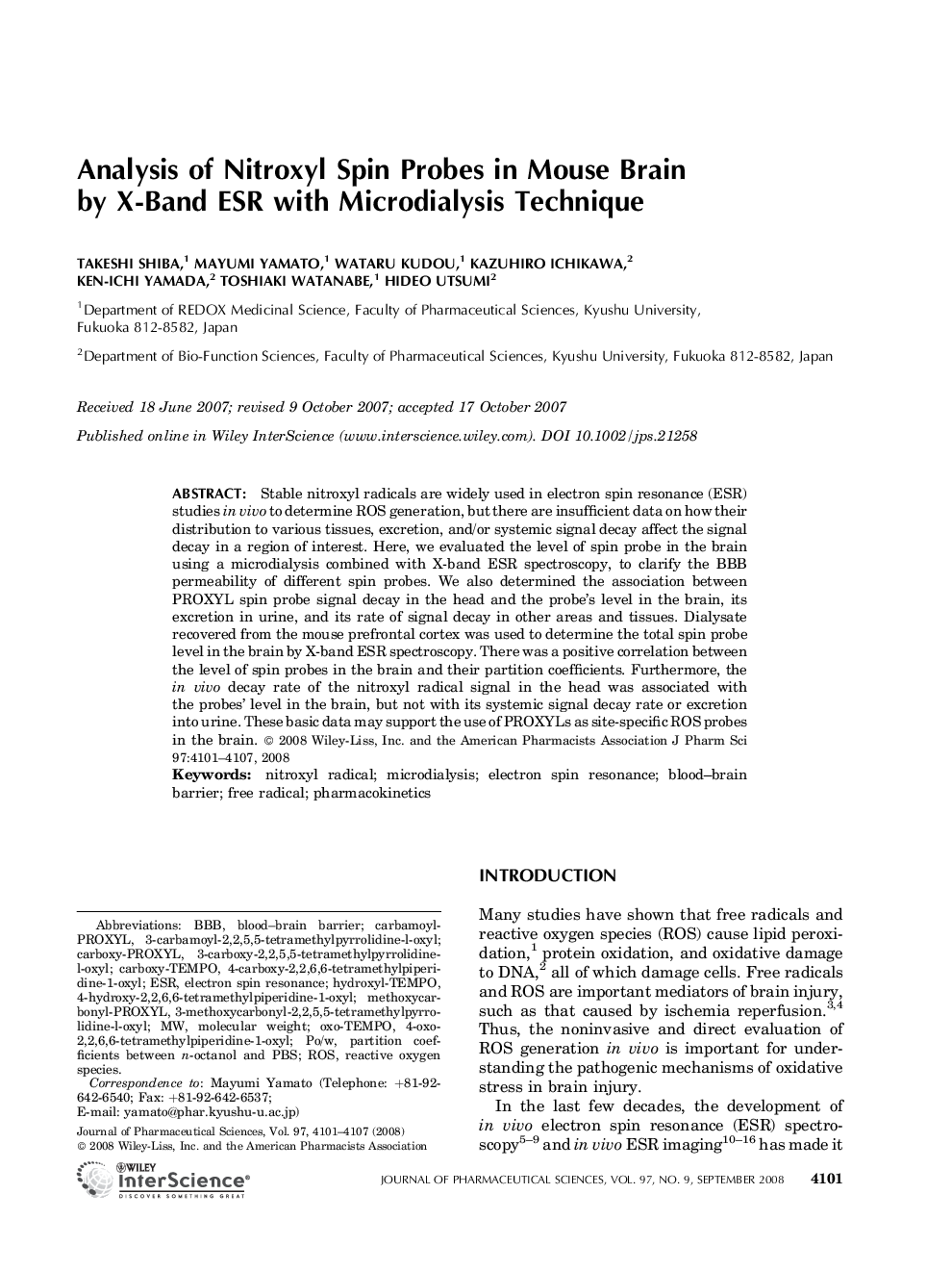| Article ID | Journal | Published Year | Pages | File Type |
|---|---|---|---|---|
| 2487280 | Journal of Pharmaceutical Sciences | 2008 | 7 Pages |
Abstract
Stable nitroxyl radicals are widely used in electron spin resonance (ESR) studies in vivo to determine ROS generation, but there are insufficient data on how their distribution to various tissues, excretion, and/or systemic signal decay affect the signal decay in a region of interest. Here, we evaluated the level of spin probe in the brain using a microdialysis combined with X-band ESR spectroscopy, to clarify the BBB permeability of different spin probes. We also determined the association between PROXYL spin probe signal decay in the head and the probe's level in the brain, its excretion in urine, and its rate of signal decay in other areas and tissues. Dialysate recovered from the mouse prefrontal cortex was used to determine the total spin probe level in the brain by X-band ESR spectroscopy. There was a positive correlation between the level of spin probes in the brain and their partition coefficients. Furthermore, the in vivo decay rate of the nitroxyl radical signal in the head was associated with the probes' level in the brain, but not with its systemic signal decay rate or excretion into urine. These basic data may support the use of PROXYLs as site-specific ROS probes in the brain.
Keywords
Related Topics
Health Sciences
Pharmacology, Toxicology and Pharmaceutical Science
Drug Discovery
Authors
Takeshi Shiba, Mayumi Yamato, Wataru Kudou, Kazuhiro Ichikawa, Ken-Ichi Yamada, Toshiaki Watanabe, Hideo Utsumi,
